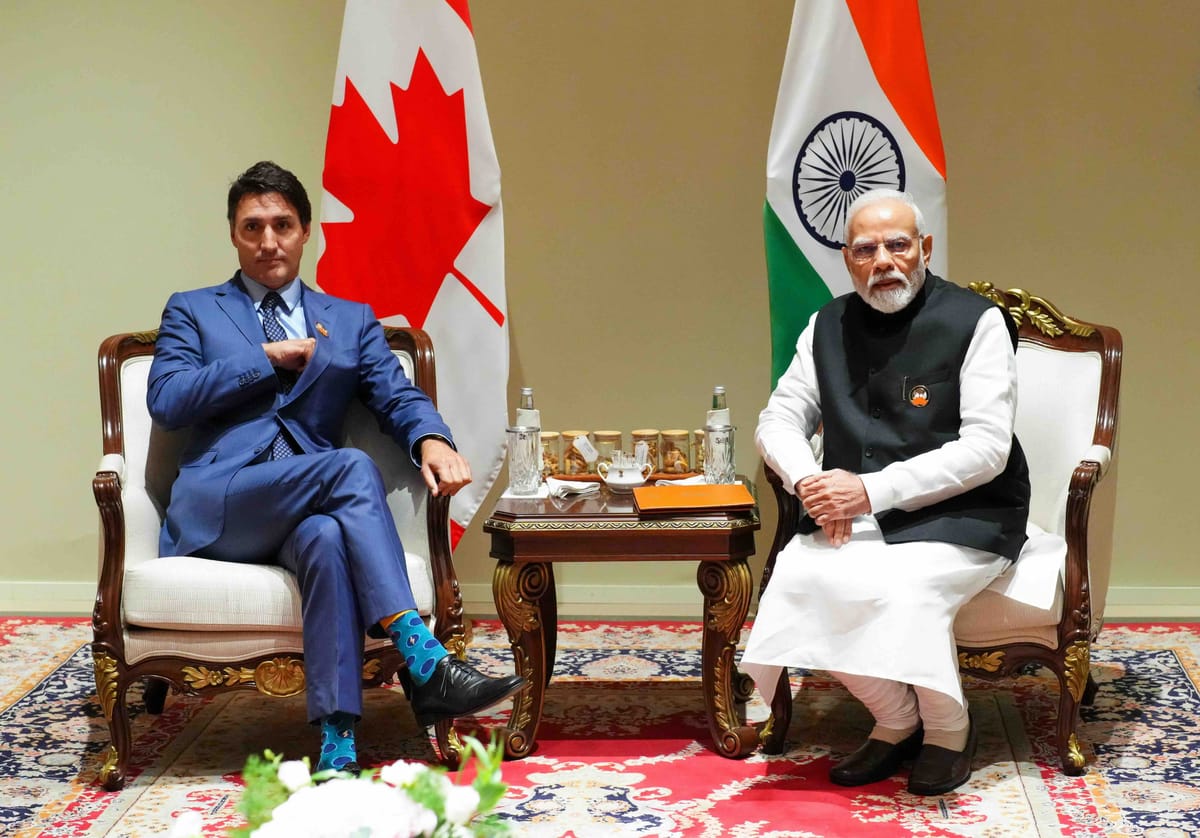Hindu-Sikh Tensions in Canada: A Comprehensive Overview
Hindu-Sikh tensions in Canada: Dive into the factors, history, and current dynamics shaping this complex community relationship.

Canada has witnessed growing tensions between its Hindu and Sikh communities lately. I'm a researcher and observer of this situation. So, I'm aiming to provide the public with an unbiased, comprehensive analysis of these events. This article will start with the origin, present specific incidents, and potential analysis of these tensions on Canadian society.
Historical Background
Particularly, the abroad and the immigration from the subcontinent played a key role in building a link between the Canadian Hindus and Sikhs. Thus, although for the past 100 years, the two communities have been part of Canada. Immigrants from these parts of the world moved to Canada in the 1960s and 1970s where people from the world come and bring the immigrant immigrants to countries like Canada. The two communities used to live peacefully until lately. They became one through assimilation into the Canadian way of life. However, other factors like the division of India, the 1984 Indian government-run Operation Blue Star and the period immediately following it, which witnessed the killing of a large number of Sikh civilians, made the impact of these events very hard on the diaspora communities in Canada. Indian politics drastically heightened these divisions and tensions that still resonate with some Hindu and Sikh community members today.
Recent Incidents
Recently, various incidents have intensified the conflict between Hindu and Sikh groups in Canada. These include:
- On the one hand, there were protests and counter-protests against the ongoing farmers' movement in India, which drew thousands of people to the Indian consulate in Toronto. On the other hand, some groups were upset that the protests were on Canadian soil but at the same time people were also protesting in India.
- Foreign entities accusing the state of India of trying to control the Canadian government.
- Disagreements surrounding the representation of religious symbols and practices in public spaces were noted in the discussions.
- Also, political statements by community leaders resulted in other issues, with some members having differing opinions on those statements.
These situations have given rise to greater political polarization among people and, sometimes, even physical threats between the two ethnic groups.
Role of Social Media and Diaspora Politics
On the other hand, social media networking sites have had a significant impact on the increased tensions between the Hindu and Sikh communities in Canada. The combination of fast information sharing, real or not, together with emotional reactions and further divisions certainly pushed the situation. Additionally, diaspora politics, where events in India continue to influence community dynamics in Canada, have contributed to the complexity of the situation.
Canadian Government Response
To these tensions in the Vancouver area, from Ottawa, the Canadian government has tried to show social harmony and diversity mean much. Demands to reduce the alienation of community and discuss about foreign dependence have been among the proactive approaches the Canadian government suggested. Law enforcement agencies were tasked to take part in the proactive Prevention Oriented criminal investigation and service, in a quest to make criminal acts zero and ensure public safety is maintained at the protests and meetings.

Implications for Multiculturalism
Hindu-Sikh tensions in Canada are in a situation where multiculturalism has been practiced in a diverse way. In a statement, we can say that these events pose the question as to what extent multiculturalism in Canada is a viable policy. Canada, which considers itself a welcoming society, has to deal with the existing tensions.
Statistics and Data
According to Statistics Canada, in 2021:
- Closer to 830,000 Hindus were found to be in Canada.
- Around 770,000 Sikhs bash the Canadian population.
- Both groups have grown a lot these last few decades.
In all, these data reveal the crucial nature of sorting out the differences and fostering domestic welfare between these large Canadian communities.
Potential Solutions and Reconciliation
It takes an all-around approach to resolving the conflicts between the Hindu and Sikh communities in Canada. As such, some suggestions include:
- Organizing cross-cultural dialogue and education programs
- Assistance from community leaders to engage in fruitful talks with dissidents
- Community run initiatives that promote shared cultural diversity
- An eventually, providing living standards will ease community rivalry
- Media education will be the best strategy to win over the polluted minds

Canadian Government Perspective
The Canadian Prime Minister, Justin Trudeau, has been trying to play the Canadian culturalization of immigration as sand in the eye, in other words, to avoid the people's unnecessary discussions.
In his recent speech, Trudeau said, "Canada always take care of freedom of speech, freedom of thought, and the freedom to assemble peacefully."
This position mirrors the Canadian commitment to racial equality over the last three decades, a commitment that has been upheld by the Canadian Multiculturalism Act since the 1988 legislative year. It was a comprehensive response to the government. At home, they have provided more support for community dialogs, in addition to the increase in house of worship security. Consequently, Canada is also giving a mediation impression by entering into a high-level conversation with India, where it convincingly missteps and balances against diplomatic twits.
The government's tactics have been both successful and unsuccessful, in handling the matter. The government's strategy has been considerably influenced by public opinion and the media, and there are competing requests for more severe or more reserved diplomacy. One of the reasons the government is facing is how to unify the society and comply with international responsibilities at the same time. Some are insisting that the standpoint has been quite tolerant, but the defenders are lauding the government's intricate approach in a tricky case.
Financially, the administration has understood that the conflict may cause problems regarding the trade relations between Canada and India, which are very important business partners. There is a greater emphasis on solving social conflicts and on enhancing the meeting of the needs of different groups. Politically, the assemblage of this situation could have a bearing on going elections, especially in the areas where a big South Asian community lives.
Community conflict management by diaspora is such a topic that is studied both in Canada and beyond. However, it has also become a reason Canada is being bashed by those countries who side with shielding their internal issues from the international community. There are also queries about whether allowing foreign controversy to influence domestic public policies could this the Canadian sovereign rule and multicultural norms.
In the final analysis, under Trudeau, the government of Canada due to the unique way of executing democratic freedoms, diplomatic connection, and internal cultural integration. When struggles continue to exist within a nation with multiple cultures, they challenge the Canadian model of multiculturalism, and it is tough to resolve problems that are global by nature but have implications on a national level.
Canada-India Relationship Impacts
The Hindu-Sikh tensions in Canada have really strained relations between Canada and India. This situation has caused some diplomatic arguments, in which India addressed its worry about the supposed anti-India activities which are going on Canadian soil.
In September 2023, Prime Minister Trudeau's public statement about "credible allegations" of Indian involvement in the killing of a Sikh leader in Canada further aggravated tensions, and as a result, a group of diplomats were sent out from both sides. This opposition has created more repercussions than just dividing the trading bloc, it indeed has affected the common part of it such as educational exchange and cultural cooperation.
Both countries need to speak the truth as they are the ways in which this relationship could be straightened. Enabling the joint effort to inter alia address concerns about extremism and foreign interference could be a productive move. Moreover, propagating cultural exchange programs and strengthening the interpersonal connections of people will be a key element in the trust building process.
It is very important for both the countries to acknowledge their shared interests in issues such as economic growth, climate change, and regional security. The emphasis of these mutual goals and the overall attitude of the two partners and will give them enough reasons to go over this difficult period in their bitcoin relationship.
How did we reach here and how it escalated?
The breaking of India in 1947 first played the role in the discord, as it caused the mass transfer and the outbreaks of the inter-faith violence. Yet the conditions got much worse after Operation Blue Star in 1984, during which the Indian army invaded the Golden Temple in Amritsar, the holiest place for Sikhs. The exhibition by the Sikh community in other parts of the world after this event, along with the Hindu riots in India, was massive.
These old scars were kept alive in the diaspora communities in Canada. The 1985 Air India bombing, which the deadliest terrorist attack in Canadian history, made the situation more complicated for the South Asian communities in the country. The growth of social media and fast international communication over the years enabled diaspora communities to keep in touch with political events in the country. It also allowed them to make the tension even worse in some cases.
Then along came events like the farmers' protests in India during the period of 2020-2021 which lit the fire again within Canadian Sikh and Hindu communities. Canadian Sikh groups appeared to be involved in the protests whereas some Hindu groups chose to stand with the Indian government. This brought about demonstrations and counter-demonstrations in several Canadian cities.
The year 2023 was the peak year with allegations of foreign intervention, as well as the murder of a Sikh father in Canada. Prime Minister Trudeau's public statement about the "substantial" allegations of Indian engagement in the killing was the next step of the escalation of the diplomatic disputes between Canada and India.
Indeed, we now are at the moment where the outstanding past unhappy matters together with up-to-the-minute political issues have resulted in the creation of multi-layered tensions. Now, our primary goal is to explore the appropriate ways to encourage interaction, comprehension, and reuniting among the diverse elements of Canada, including the latter's relations to India.
Conclusion
Canadian society does struggle with Hindu and Sikh communities' tensions that are inherently complex and based in historical, political, and social concerns. Greater unity and dialogue as a society are called for to solve the declared problems. By emphasizing the exchange of cultures and mutual respect as our national heritage as Canadians, we can embrace a peaceful and open culture across all ethnicities.
This situation has caused some diplomatic arguments, in which India addressed its worry about the supposed anti-India activities which are going on Canadian soil. For example, in September 2023, Prime Minister Trudeau's public statement about "credible allegations" of Indian involvement in the killing of a Sikh leader in Canada further aggravated tensions, and as a result, a group of diplomats were sent out from both sides. This opposition has created more repercussions than just dividing the trading bloc, it indeed has affected the common part of it such as educational exchange and cultural cooperation.
Both countries need to speak the truth as they are the ways in which this relationship could be straightened. Enabling the joint effort to inter alia address concerns about extremism and foreign interference could be a productive move. Moreover, propagating cultural exchange programs and strengthening the interpersonal connections of people will be a key element in the trust building process.
It is very important for both the countries to acknowledge their shared interests in issues such as economic growth, climate change, and regional security. The emphasis of these mutual goals and the overall attitude of the two partners and will give them enough reasons to go over this difficult period in their bitcoin relationship.




